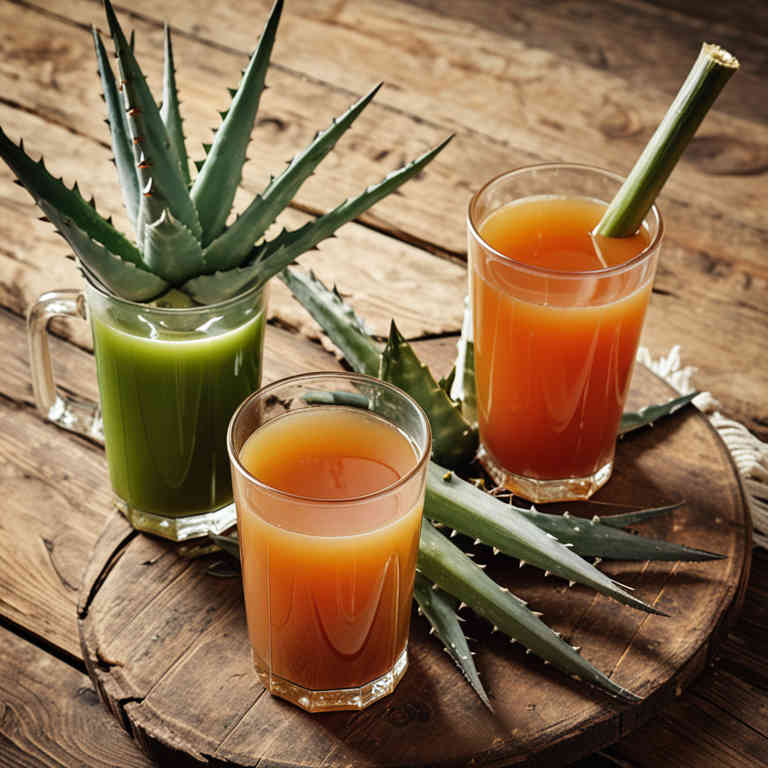Aloe barbadensis juice for medicinal use

Aloe barbadensis juice is a liquid extracted from the gel-like pulp of the Aloe vera leaf.
It is widely used in herbalism for its soothing and healing properties. The juice is known for its ability to promote skin health, reduce inflammation, and support digestive wellness. In traditional medicine, it has been applied topically to treat burns, wounds, and skin irritations.
It is also consumed internally to aid in detoxification and improve overall gastrointestinal function.
Uses
Aloe barbadensis juice has been used to treat a variety of ailments for thousands of years, with its origins tracing back to ancient Egypt, where it was revered as the "plant of immortality.".
Traditionally, it was used to soothe skin conditions, heal wounds, and even as a cosmetic for beauty treatments. In modern times, it is widely recognized for its soothing properties, particularly in skincare products and for alleviating digestive issues. Scientific research has supported its anti-inflammatory and antioxidant effects, leading to its incorporation in both traditional and contemporary medicinal practices.
Today, it remains a popular natural remedy for promoting skin health and digestive wellness.
Benefits
Aloe barbadensis juice has health benefits such as promoting digestive health, supporting skin healing, and reducing inflammation.
It contains enzymes that can aid in the digestion of proteins and may help alleviate symptoms of irritable bowel syndrome. The juice is also known for its soothing properties, making it useful in treating minor burns, sunburns, and skin irritations. Additionally, it may contribute to hydration and detoxification due to its high water content and natural laxative properties.
Some studies suggest that aloe juice might support immune function and have antioxidant effects that help protect cells from damage.
Constituents
Aloe barbadensis juice active constituents include polysaccharides, enzymes, anthraquinones, and vitamins such as A, C, and E. These components contribute to its anti-inflammatory, antimicrobial, and skin-repairing properties.
Polysaccharides are believed to support immune function and wound healing. Enzymes like bromelain may aid in digestion and reduce inflammation.
Anthraquinones have laxative effects and can help with digestive health.
Preparation
To make Aloe barbadensis juice, start by selecting a mature Aloe plant and carefully removing the gel from the inner leaf.
Wash the gel thoroughly to remove any outer skin or debris. Place the gel in a blender and add a small amount of water to help with blending. Blend until smooth, then strain the mixture through a fine mesh sieve or cheesecloth to remove any remaining pulp.
Finally, store the juice in a sealed container in the refrigerator for up to a week.
Side Effects
Aloe barbadensis juice may lead to gastrointestinal discomfort, including nausea, diarrhea, and stomach cramps, especially when consumed in large amounts.
It can also cause electrolyte imbalances due to its high potassium content, which may be harmful to individuals with kidney disease. Long-term use might result in dependency or reduced effectiveness of certain medications. Some people may experience allergic reactions, such as skin rashes or itching.
It is important to consult a healthcare professional before using aloe juice, particularly for prolonged periods or in combination with other treatments.